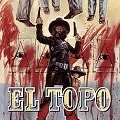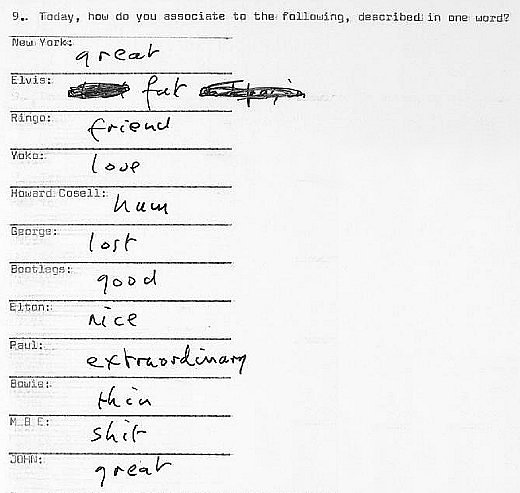- What John Lennon Thinks of Donald Trump - November 14, 2016
- The Meaning of Fun: The Paul is Dead Rumor - February 3, 2016
- BEATLES-STREEP-SHEA SHOCKER: IT’S NOT HER!!!! - August 13, 2015
DEVIN McKINNEY • This turns up on one’s Facebook feed today: “It’s Not Just Cosby: Hollywood’s Long List of Male Scumbags,” a Daily Beast mow-down, inspired by the Bill Cosby revelations (or confirmations, more accurately) of several beloved or at least well-compensated male stars whose prevailing public profiles belie repellent acts committed out of the spotlight. Among the scumbags rounded up by poster Asawin Suebsaeng is one John Ono (ne Winston) Lennon.
If you think it’s wrong to link to this story here at a Beatle-celebration site, to feed its clicks and so forth, you might be right. But it’s a Beatle-related thing that a lot of people are seeing today and will see tomorrow; it certainly has relevance to the Lennon revisionism that goes on at Hey Dullblog; and it presents an interesting study for critical thinking.
On the one hand, the Lennon connection here is disingenuous, if not simply defamatory. John Lennon, despite his Lost Weekend, was hardly a “Hollywood” person, so to include him in this particular rogues’ gallery is foolish. Plus, though he’s prominently featured in the headline illustration, Lennon is rather far down on the scumbag list, his scumbaggery given one sentence, and an overstated one which, unless all nuance is to be junked, is simply not accurate to the linked source (or any other I know of).
On the other hand, John had his demons—ones we know, and ones we surely don’t. Those we do know have been set loose in our little HD forum, there to receive proper upbraiding and integrating into what we hope is a more realistic Lennon mythos than that offered by Yoko, Wenner, and the other forces of officialdom. So there’s a kernel of truth here, presented ignominiously and dishonestly, perhaps, but nonetheless worthy of reaction.
So you guys: What do you think of this? The characterization of Our John, such as it is? Is it okay for rabid Beatles fans like us to knock John off his pedestal, but not for others who, as far as we know, are less rabid or perhaps not fans at all? Does the truth still ring depending on who speaks it? Does the charlatanry of this particular post make it incumbent upon us to deal with John in the context of a general lionization of male abusers who happen to have a commercially marketable or even world-changing gift?













That article is trash. They lumped John Lennon — John Lennon! — in with a serial rapist, Mile Tyson, Charlie Sheen, Terry “show me your tits” Richardson, etc.
Lennon once walked around with a Kotex napkin on his forehead. So forget about peace, love, and *being John Lennon*. He’s a third rate wanker who likes little girls.
Just stupid.
Recognizing true regret and change for the better is not rocket science. But apparently it is something The Daily Beast is not interested in.
Producing “disingenuous, if not simply defamatory” prose about someone is never justified, in my opinion.
I think it’s necessary to question the official narrative of the Lennon estate, but I have no patience with this kind of lazy, click-baiting screed.
This is journalism on the level of a Cracked.com listicle, and resists much precision of thought.
There’s so much going on in the Cosby thing — everything from the viciousness of Patriarchy to celebrity culture to the disgusting power dynamics built into capitalism — that I think it’s too big to be treated in a blog comment. (Though I will make the drive-by observation that I wonder how Lennon and the world would’ve reacted if it had been Cyn who’d outed John as a hitter. Remember that he tried to stop her 1978 bio from coming out. Probably she wouldn’t’ve been believed. Certainly it wouldn’t have made it into the historical portrait as vividly as it has. So even the confession of a powerful male celebrity gets special treatment.)
But there’s a surface level issue that seems comment-sized: how the public seems to want to believe the best of their celebrities, and will scrupulously avoid discussing their flaws, no matter how awful, until the last extremity. Which is why I think it’s perfectly valid — actually a good idea — to learn about these people, and consider them from all angles. I don’t think you have to like them to do so; though if one doesn’t see the appeal, there’s the risk of going Goldman on a subject, and that’s as distorted as hagiography. The point, for me, is to see the celebrity clearly, as a fellow human.
The internet’s angle on the Cosby story is asinine — “OMG Cliff Huxtable!! Puddin’ pops!!1!!11” — but the truth is as sad as the crimes horrific. Cosby’s contribution to comedy, and specifically African-American comedy, while not quite Beatle-sized, has been immense. Richard Pryor would not have been possible without Bill Cosby, and without Richard Pryor, it’s difficult to see what contemporary standup would even be. Cosby is foundational, and he’s a black American who overcame so much, and that’s why people kept his secret. It’s slightly similar to the situation with Chuck Berry, who basically created rock and roll, while indulging in all sorts of bizarre sexual behavior; though Berry’s seems to have been mostly consensual, and he never had a squeaky-clean image either.
It’s the juxtaposition that’s making this story explode — but we should all be past the cheap thrill of Mr. Clean doing dirty; we should be past surprising when stuff like this comes out. Bill Cosby never was Cliff Huxtable; nor was John Lennon ever St. John of Peace. It is, in part, our willing credulity that enables celebrity misbehavior. Believing in images is childish and unnecessary and helps nobody and hurts lots of people. To me, Cosby’s behavior seems psychopathic (“suffering from or constituting a chronic mental disorder with abnormal or violent social behavior”); only Albert Goldman would throw John in that same bucket.
Celebrities are our sacred monsters. Some of them start out normal, some less so — but certainly anyone who withstands the public gaze for too long seems to become more monstrous. The only responsible way to proceed is to hold celebrities to the same standard as everybody else. I’m sure we all agree on that.
…but think of what we would’ve lost, had John Lennon been tried like your average 23-year-old for the beating of Bob Wooler. Is that fairness worth the entire Beatles story? Am I hypocrite for being glad John got off?
Sacred monsters sometimes demand sacrifices, and that makes me uncomfortable, and maybe you, too.
” . . . the public seems to want to believe the best of their celebrities, and will scrupulously avoid discussing their flaws, no matter how awful, until the last extremity.”
This is true, but so is the converse. The public also takes perverse delight in trashing / seeing trashed those who have been built up in this way. Think of the Michael Jackson saga and the way it played out (and continues to play out).
“Sacred monsters” is right. There’s a scary love/hate dynamic to the way the public relates to celebrities. It’s a wonder anyone famous survives with a shred of sanity.
Cintra Wilson’s book “A Massive Swelling: Celebrity Reimagined as a Grotesque, Crippling Disease” is the smartest thing I’ve read on this subject.
Is it, though, @Nancy? I know that’s the conventional wisdom, but for the life of me I can’t think of an example where a contemporary celebrity has been unfairly trashed. Michael Jackson was pilloried for his strange plastic surgery, for his odd behavior, and for his troubling interactions with children, but not only was he equally lionized, he was also not constrained in any way — he didn’t stop associating with children due to public outcry. To my ear, the public discourage on Michael Jackson was at the “Beatles’ long hair makes them look like GIRLS” level. Totally unserious, and totally disregarded. And any celebrity with a decent sense of PR can pull off a forgiveness tour.
I don’t know if you’ve been paying attention to Gawker, which just outed the sexual behavior of a Conde Nast executive. (He is a married man who hired a man to have sex with him.) In a world where that is “news,” the fact that Cosby’s pattern of raping women stayed hidden for decades points to something really profound in our society. Sure, there are people who hate on celebrities just because they’re celebrities — but that dislike seems to be quite surface and reversible, while the positive sheen of wealth, power, and fame, is much more durable. Celebrities often complain, and feel constrained, but I don’t see much evidence for that — surely I’m forgetting something? Princess Diana’s car crashing over paparazzi was an accident, not a purposeful action. What am I forgetting?
John Lennon used to joke that at the height of Beatlemania, he could’ve robbed banks and gotten away with it. I have no doubt he was right.
http://mashable.com/2015/06/25/john-lennon-rolls-royce/
On June 3 1965, John Lennon drove a Rolls Royce Phantom V, registration number FJB111C. Nineteen feet long, fitted with a limousine body and painted Valentines black, the vehicle cost £6,000.
The following year, Lennon had the backseat transformed into a double bed. He also added a TV, a refrigerator, a phone, a record player and blacked-out windows. But Lennon felt it needed that little something extra.
At Lennon’s request, the car was custom painted a bright yellow by coachbuilders J.P. Fallon. The design was based on a Gypsy caravan, with a zodiac sign inscribed on the roof, and scrolls and flowers in a kaleidoscope effect painted on the sides and the wheels.
Despite lavishing such attention — and money – on his Rolls, Lennon was known as a poor driver. He passed his UK driving test in 1965, when he was 25, but seldom actually drove a vehicle, preferring instead to employ one of two chauffeurs, Les Anthony and Bill Corbett.
However, Lennon was definitely behind the wheel on July 1, 1967. While on vacation in Scotland, he crashed his car into a ditch (not the Rolls, but a rather more humble Austin Maxi). Yoko Ono, his son Julian and Yoko’s daughter, Kyoko were also in the car.
Lennon had 17 stitches on his face, while Ono had 14 and Kyoko had four. Julian was treated for shock. His mother, Cynthia, took him back to London the next day. Lennon refused to talk to her when she arrived.
After the incident, Lennon gave up driving for good.
He had the car imported to America and, in 1977, gave it to the Smithsonian Institute as settlement for a $250,000 tax bill. Displayed for a few months, the car was soon in storage as the Smithsonian could not afford the insurance to keep it on view.
In 1985, the Smithsonian auctioned the car at Sotheby’s for $2.3 million dollars, making it the most expensive car in history. The owner of Ripley’s Believe It or Not purchased the car, and it is currently on display at the Royal BC Museum in Victoria, British Columbia, Canada.
I think John’s car crash was 1969 (in the middle of Abbey Road), not 1967.